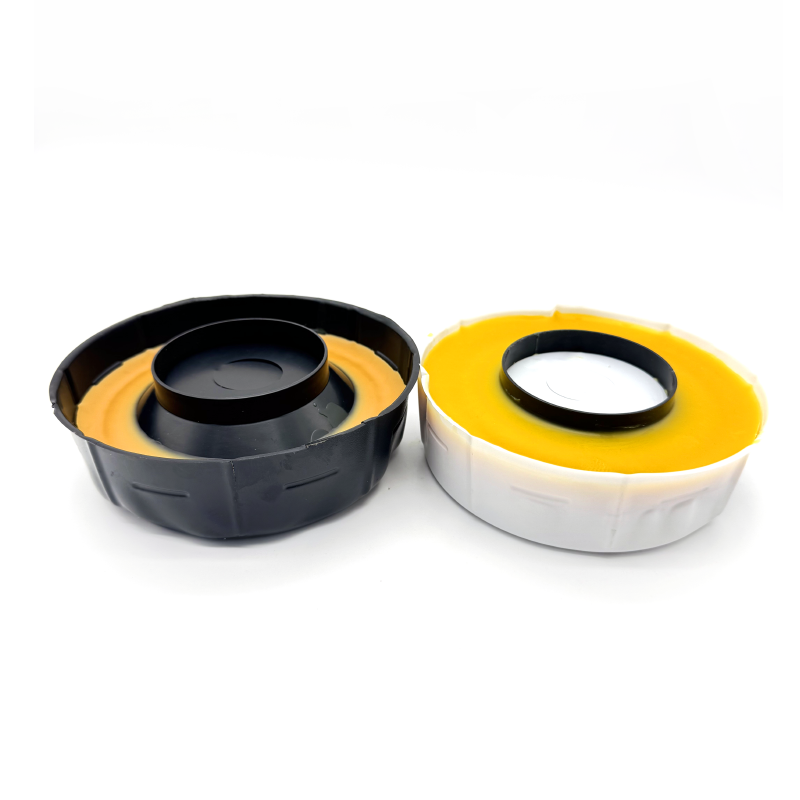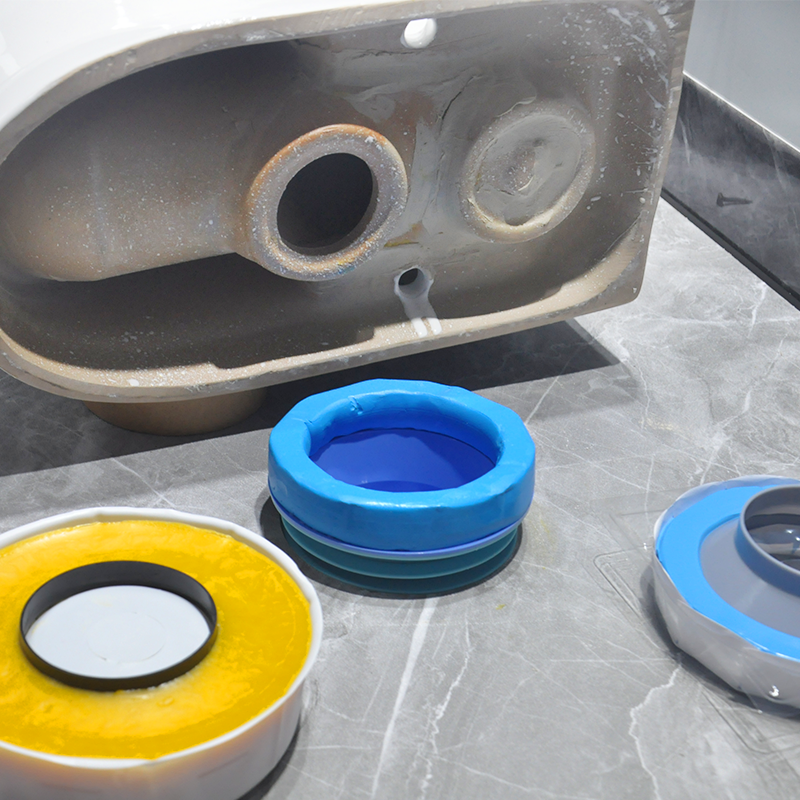Understanding Regulatory Compliance for Sanitary Seals in Food and Pharmaceutical Systems
FDA 21 CFR 177.2600 and Material Approval for Food Contact Surfaces
The FDA’s 21 CFR 177.2600 regulation mandates that materials used in food-contact surfaces must resist degradation from fats, acids, and cleaning agents while remaining non-toxic. This standard ensures elastomers like silicone or EPDM meet stringent extractables limits, preventing chemical migration into food products during processing.
USDA 3-A Sanitary Standards and Their Impact on Seal Design
3-A Sanitary Standards govern seal design for dairy and food processing, requiring crevice-free geometries and surface finishes below 32 Ra μin to prevent microbial harborage. These standards drive innovations like full-face gaskets with flush-mounted profiles, reducing downtime during CIP cycles by 18% in beverage plants (2024 Sealing Technology Report).
USP Class VI Certification for Pharmaceutical and Bioprocessing Applications
USP Class VI certification subjects seal materials to rigorous biological reactivity tests, including implantation in living tissue. Fluoroelastomers meeting this standard demonstrate zero cytotoxicity after 7-day extractions, critical for maintaining sterility in biopharma reactors and filling lines.
Harmonizing Global Compliance Requirements Across Industries
Global manufacturers must reconcile overlapping standards like EHEDG (Europe) and 3-A (North America) by prioritizing seals with dual certifications. This alignment reduces supply chain complexity by 40% for multinational food processors while ensuring compatibility with plumbing components requiring NSF/ANSI 61 approval.
Evaluating CIP/SIP Compatibility and Thermal Chemical Durability
Clean in Place (CIP) System Challenges for Seal Integrity
Cleaning in place (CIP) systems put seals through some pretty harsh chemicals including caustic solutions around pH 12 to 14 levels and nitric acid too. These substances can really break down materials that aren't compatible when temperatures reach as high as 85 degrees Celsius (about 185 Fahrenheit). According to various industry reports, roughly 4 out of every 10 early seal failures seen in food processing facilities actually come down to issues like chemical swelling or cracking after multiple rounds of CIP cleaning. The automated nature of these cleaning procedures makes things worse because materials stay in contact with chemicals for longer periods without anyone checking them manually between cycles.
Steam in Place (SIP) Thermal Stress and Seal Degradation Risks
Steam sterilization processes typically expose seals to temperatures between 121 and 135 degrees Celsius (or around 250 to 275 Fahrenheit) for about half an hour to an hour during each cycle. This heat causes materials to expand thermally and eventually develop compression set deformations over time. According to research published last year in the Sanitary Engineering Journal, certain fluorocarbon based elastomers actually lose roughly 15 to 20 percent of their initial sealing strength after going through approximately 500 such sterilization cycles, which naturally raises concerns about potential leaks. Finding the right material involves striking a delicate balance between resisting steam damage and maintaining enough flexibility. Harder materials like PTFE tend to crack when exposed repeatedly to these temperature fluctuations, whereas softer options such as silicone might squeeze out or extrude under operational pressures.
Case Study: Seal Failure After 1,200 CIP Cycles in a Dairy Processing Plant
A Midwest dairy plant experienced a catastrophic silicone gasket failure in its pasteurization line after 1,200 CIP cycles. Post-failure analysis revealed:
| Failure Factor | Measurement | Industry Benchmark |
|---|---|---|
| Chemical Swelling | 22% volume increase | ≤15% acceptable |
| Tensile Strength Loss | 58% reduction | ≤30% acceptable |
| Surface Cracking Depth | 1.2 mm | 0.5 mm critical threshold |
Root causes included incompatible caustic cleaner concentrations and inadequate thermal recovery time between cycles. The plant adopted accelerated life testing protocols to validate replacements, reducing downtime by 37%.
Strategies to Extend Seal Longevity Under Repeated Sterilization
- Material upgrades: Transition from EPDM to peroxide-cured FKM for improved NaOH resistance (4× longer lifespan at 80°C)
- Design modifications: Implement bi-directional spring-energized seals to maintain contact pressure during thermal contraction
- Process controls: Limit CIP phase temperatures to ≤75°C and SIP dwell times to ≤45 minutes for elastomer grades with 200–250°F ratings
- Predictive maintenance: Use ultrasonic thickness gauging to detect seal degradation before failure occurs
Material Selection: Balancing Chemical Resistance, Temperature Range

Assessing Chemical Exposure Profiles in Food, Beverage, and Pharma Settings
When looking at chemical compatibility, the first step is figuring out what kind of exposure risks exist in different industrial settings. Take food processing plants for example they commonly deal with things like acetic acid from vinegar and caustic soda used in cleaning solutions. On the other hand, pharmaceutical operations have to contend with much harsher chemicals including isopropyl alcohol and ethylene oxide. Recent research from 2024 checked out 62 biopharma facilities and discovered something interesting about those seal failures. Around 8 out of 10 happened even when solvent levels were under 15%. This shows just how important it is to get the right materials matched up properly, especially since temperature changes can really complicate things when dealing with even seemingly mild chemicals.
Resistance Properties of Common Gasket Materials to Acids, Bases, and Solvents
| Material | Acid Resistance | Base Resistance | Solvent Resistance | Typical Applications |
|---|---|---|---|---|
| EPDM | Poor | Excellent | Poor | Alkaline cleaners |
| NBR | Moderate | Moderate | Good | Oils & hydrocarbons |
| PTFE | Excellent | Excellent | Excellent | Universal chemical |
| Silicone | Moderate | Poor | Poor | Low-chemical steam |
Silicone vs. FFKM: Cost Performance Tradeoffs in High-Demand Applications
Silicone ($8–12/lb) remains popular for its -65°F to 400°F range but fails rapidly in petroleum-based cleaners. FFKM compounds ($450–600/lb) withstand 450°F steam and 98% sulfuric acid—critical for SIP sterilization but cost-prohibitive for non-critical zones.
Comparative Overview: PTFE, EPDM, NBR, and Emerging Elastomers
PTFE’s near-universal chemical resistance (pH 0–14) makes it ideal for multipurpose systems, despite compression set limitations. New perfluoroelastomers blend FFKM’s durability with 30% lower costs through reinforced filler technologies.
Designing for Cleanability and Microbial Control in Sanitary Systems
Eliminating Crevice Points Through Full Face Gasket Designs
Full-face gasket designs reduce microbial harborage risks by 83% compared to partial-contact seals in food processing systems (Food Safety Magazine 2024). These designs eliminate crevices where pathogens like Listeria and Salmonella typically proliferate, with recent dairy plant trials showing a 75% reduction in biofilm formation after switching to continuous-seam gaskets.
Surface Finish Standards (Ra Value) and Biofilm Formation Risks
Getting surface roughness down to Ra values under 0.8 micrometers makes all the difference when it comes to keeping things clean, according to findings from the latest Food Processing Equipment Report released in 2025. When surfaces go above Ra 1.6 micrometers, they tend to hold onto about 40 percent more organic material after those cleaning-in-place cycles, which basically creates a welcoming environment for bacteria to set up shop. That's why we're seeing so much electropolished 316L stainless steel these days, especially in pharmaceutical settings where controlling Pseudomonas species is absolutely essential. These materials have mirror-like finishes with Ra measurements often below 0.4 micrometers, making them the gold standard for facilities dealing with sensitive biological products.
Role of Sanitary Gaskets in Maintaining System Hygiene and Product Safety
The right gasket specifications can stop about 92 percent of contamination problems in food processing plants that follow USDA regulations, as shown by recent sanitation checks from 2023. When it comes to keeping products safe, these gaskets really matter. Take a brewery that had trouble with recalls last year - they found out that bad seals were behind nearly two thirds of all their yeast contamination issues. Manufacturers are now turning to newer materials such as platinum cured silicone combined with built-in antimicrobial properties. These advanced options have demonstrated around 30 percent better results compared to old school EPDM rubber when following strict hygiene standards for food production processes.
This engineering approach ensures compliance with FDA Food Safety Modernization Act (FSMA) requirements while optimizing maintenance cycles—principles equally critical when specifying durable components like toilet wax ring replacement kits in commercial restroom applications.
Engineering Framework for Selecting Long Lasting Sanitary Seals
Step by Step Guide to Material Selection Based on Operating Parameters
Begin by mapping chemical exposure profiles, thermal ranges, and mechanical stress patterns specific to your application. Processing systems handling acidic cleaners (pH <2) at 180°F require different elastomers than those exposed to alkaline solutions (pH >12) at ambient temperatures. Cross-reference material datasheets with ASTM F1387-99 standard test methods for validation.
Temperature, Pressure, and Dynamic Movement: Matching Properties to Performance Needs
Silicone’s -40°F to 400°F range suits thermal cycling, while FFKM handles 446°F steam sterilization but costs 8–12× more than EPDM. For systems with >15 PSI pulsation, prioritize materials with <10% compression set after 1,000 cycles.
Predicting Durability Using Accelerated Life Testing and Field Data
Studies show accelerated life testing methodologies can predict 85% of field failures by replicating 10 years of thermal-chemical stress in 12 weeks. Cross-validate lab results with maintenance logs tracking seal replacements in comparable systems.
Avoiding the Pitfall: Why High Performance Materials Sometimes Fail Prematurely
A 2023 analysis of 214 seal failures revealed 62% stemmed from improper surface finishes (Ra >32 μin) rather than material defects. Even premium perfluoroelastomers underperform if system vibrations exceed their shear modulus limits.
This engineering framework applies to all fluid containment systems, including toilet wax ring replacement kits, where material compatibility with waste line temperatures and movement tolerance determine long-term reliability.
Table of Contents
- Understanding Regulatory Compliance for Sanitary Seals in Food and Pharmaceutical Systems
- Evaluating CIP/SIP Compatibility and Thermal Chemical Durability
- Material Selection: Balancing Chemical Resistance, Temperature Range
- Assessing Chemical Exposure Profiles in Food, Beverage, and Pharma Settings
- Resistance Properties of Common Gasket Materials to Acids, Bases, and Solvents
- Silicone vs. FFKM: Cost Performance Tradeoffs in High-Demand Applications
- Comparative Overview: PTFE, EPDM, NBR, and Emerging Elastomers
- Designing for Cleanability and Microbial Control in Sanitary Systems
-
Engineering Framework for Selecting Long Lasting Sanitary Seals
- Step by Step Guide to Material Selection Based on Operating Parameters
- Temperature, Pressure, and Dynamic Movement: Matching Properties to Performance Needs
- Predicting Durability Using Accelerated Life Testing and Field Data
- Avoiding the Pitfall: Why High Performance Materials Sometimes Fail Prematurely



